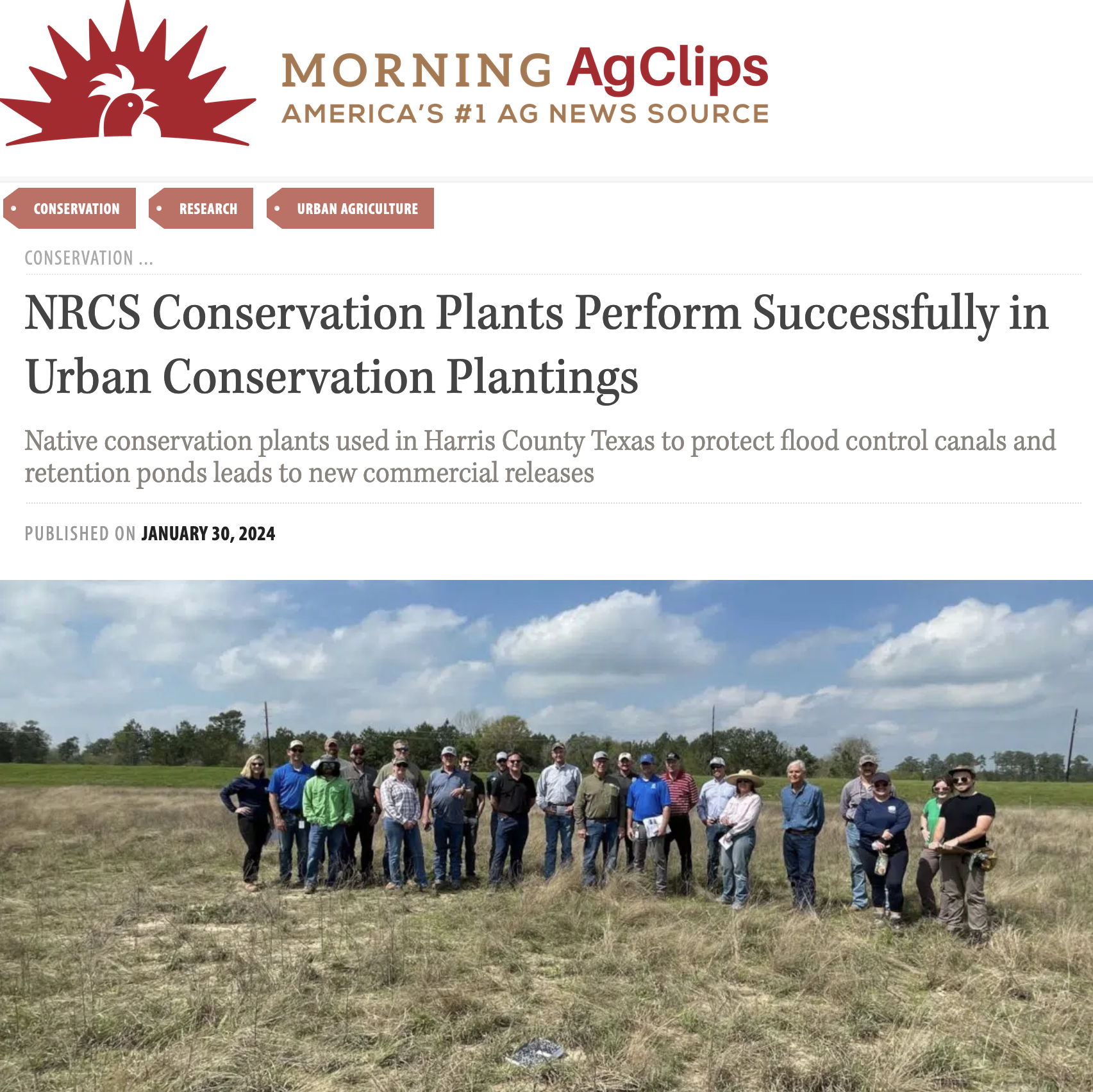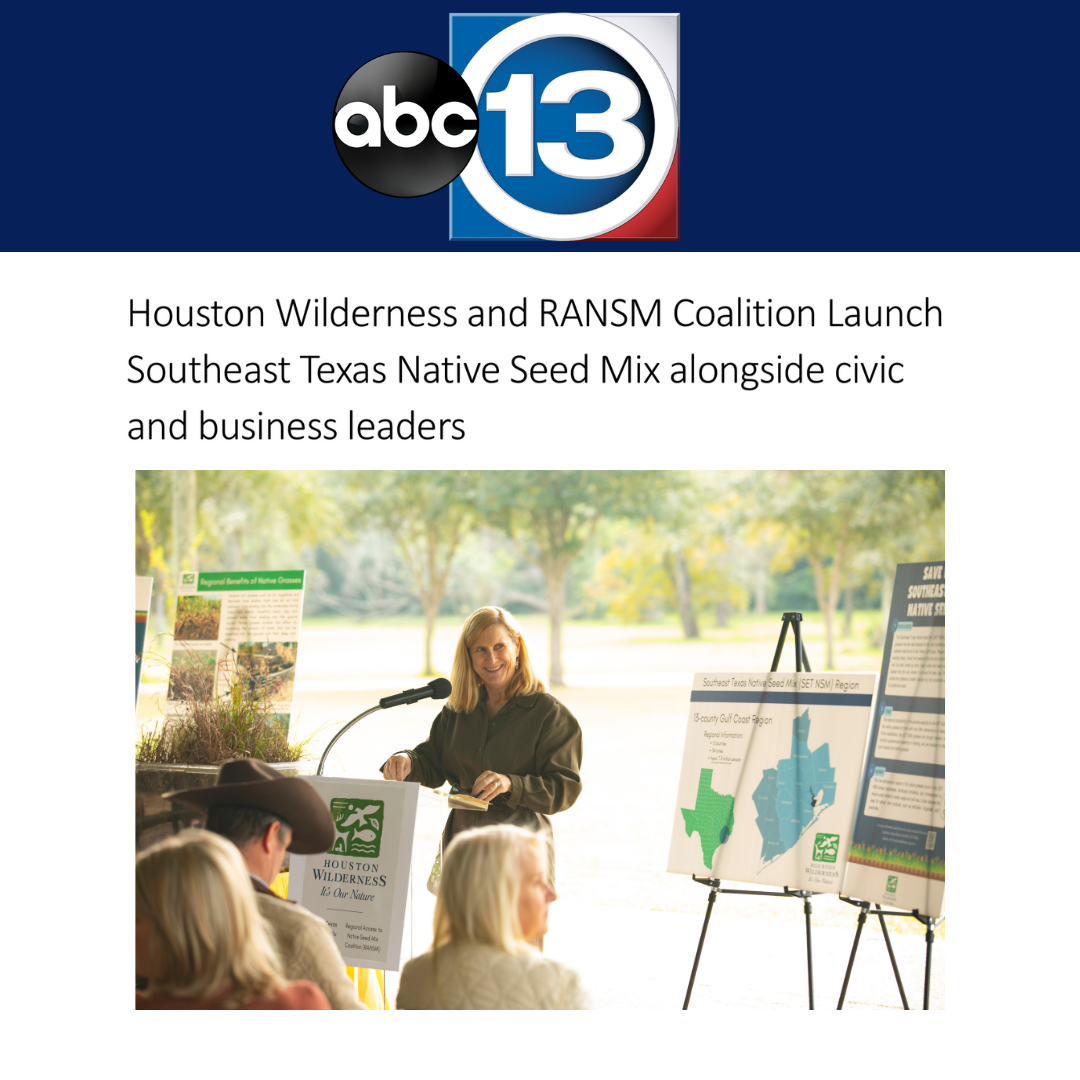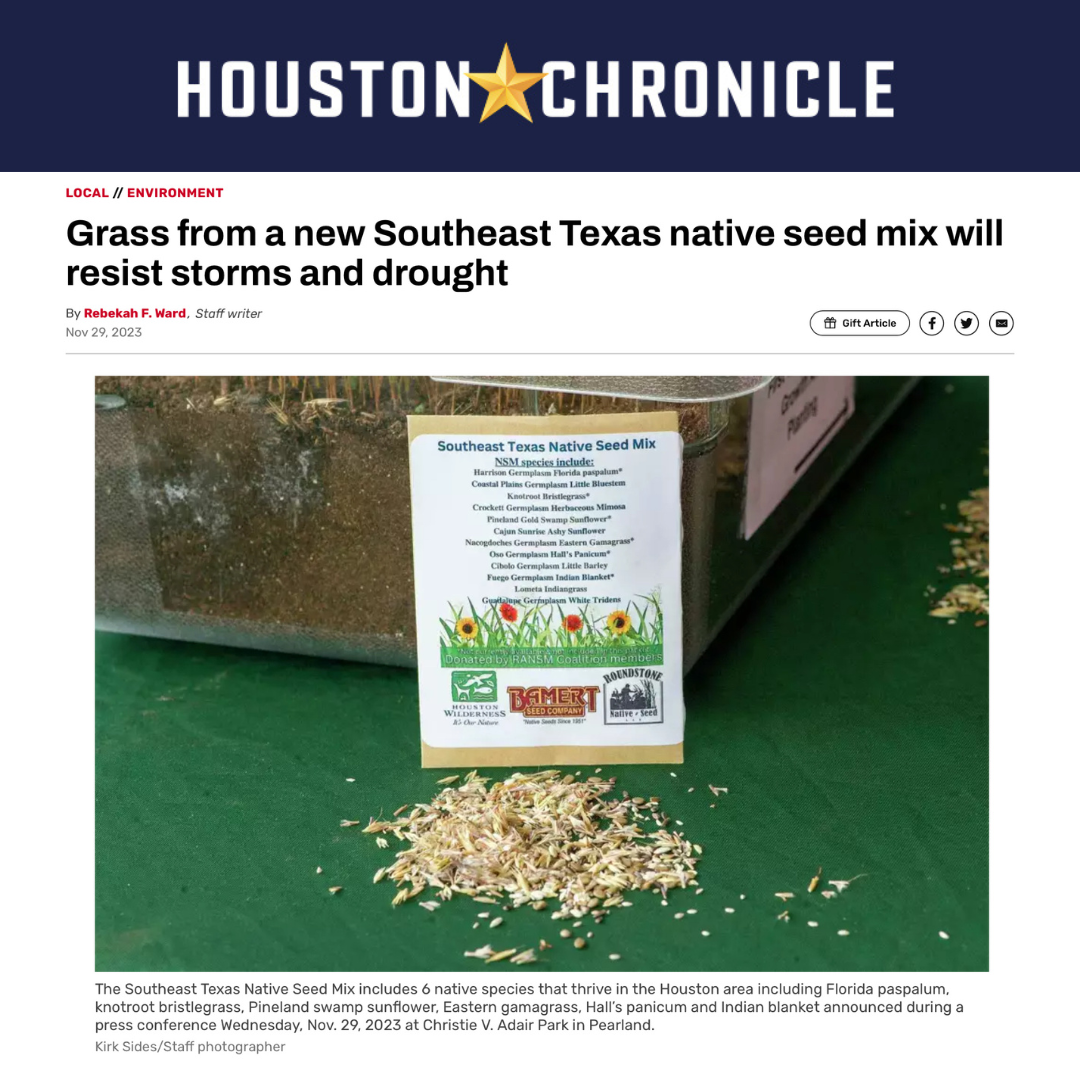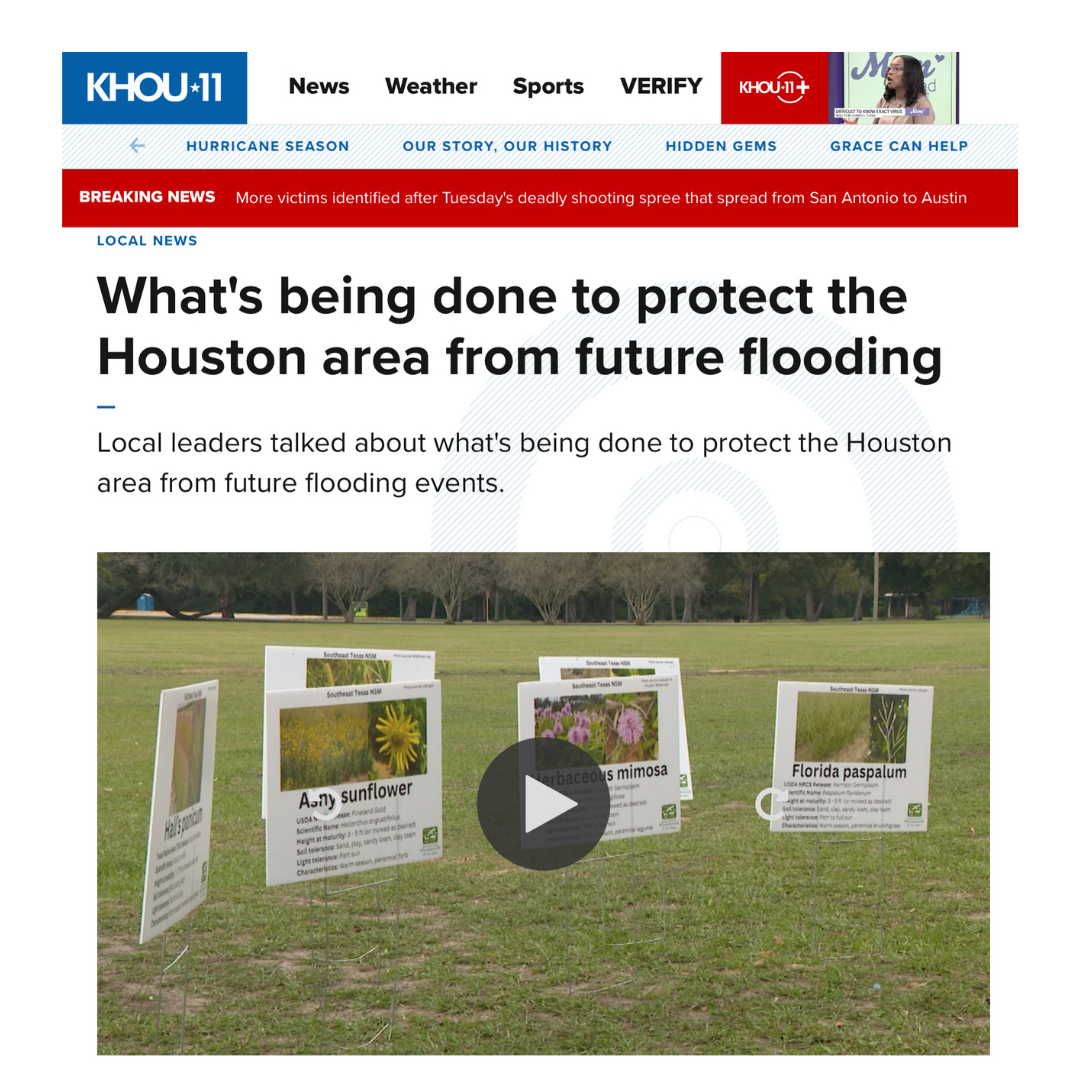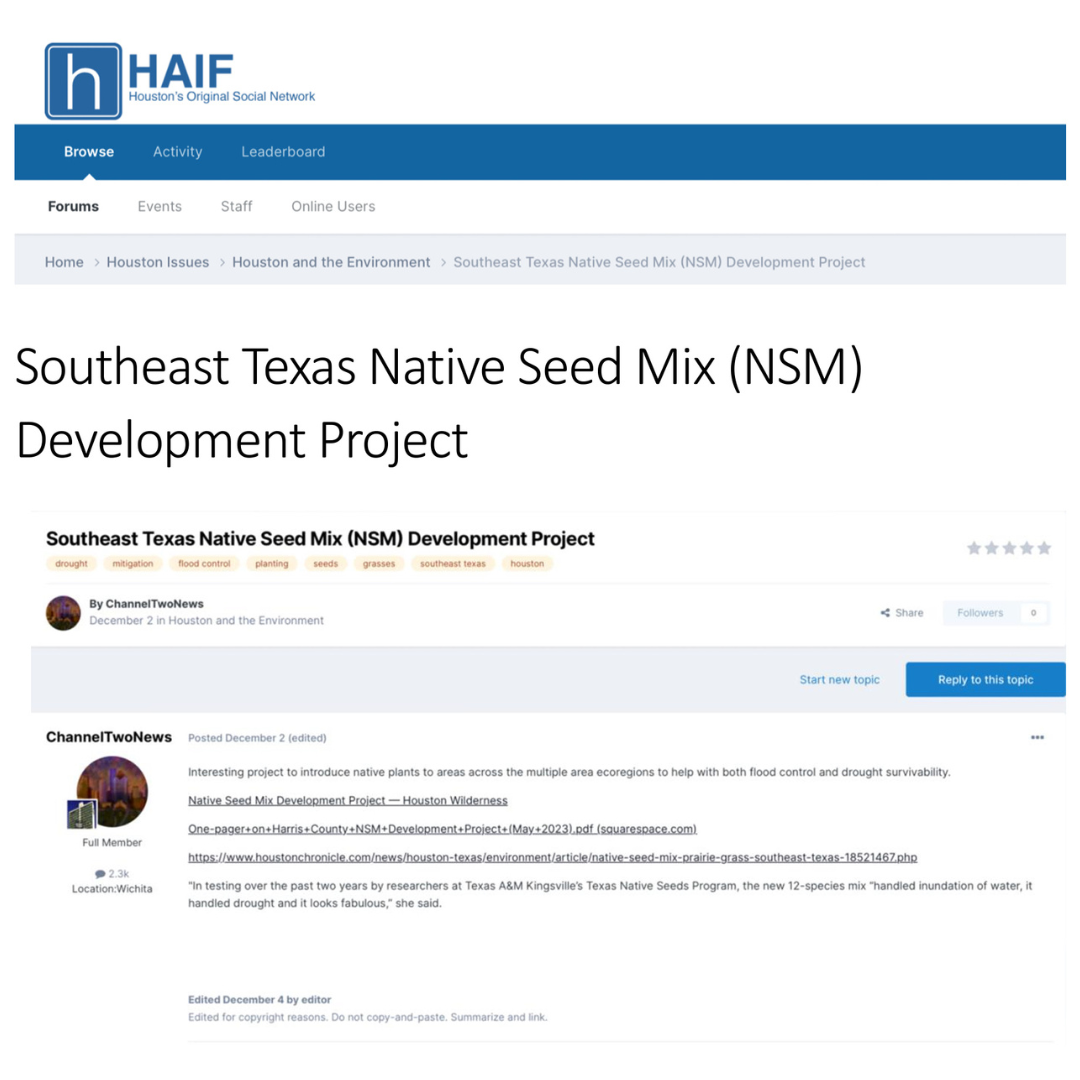PRAIRIE SYSTEMS
ABOUT THE PRAIRIE SYSTEMS
Visitors can bird-watch, hike, picnic, fish, hunt, swim and more in the ecoregion. The prairie lands provide important habitat for many migratory species, including geese, waterfowl and songbirds. It is also the final battleground for the struggling Attwater’s Prairie Chicken, whose numbers today is less than 60. Once lost, the prairie will never be replaced. And the loss of prairie lands – not just the Katy Prairie, but coastal prairie more broadly – threatens the well-being of both people and wildlife in the Houston region. The prairie filters stormwater run-off, sequesters carbon, and is one of the last strongholds for wildlife in the region. Last, but certainly not least, the protection and restoration of these lands plays an important role in regional flood control by absorbing and holding floodwaters from downstream Houston.
Prairie lands buy us time. When restored coastal prairie holds water, it slows water traveling downstream. In catastrophic flooding events, this time is essential. It’s the time we need for water to drain, for the sun to come out, and for flood-prone residential and commercial areas to recover. Since 1992, the Houston metropolitan area has lost up to 70 percent of its wetlands. The EPA estimates that one wetland acre can store between 1 and 1.5 million gallons of water.
For great Prairie resources and a list of Prairie-related events please visit: https://www.prairiepartner.org/.
Watch these videos to virtually visit and learn about the beautiful landscapes and wildlife of our Prairie Systems:
• Last Stand of the Coastal Prairie (Texas Parks & Wildlife)
• Attwater's Prairie Chicken (Houston Zoo)
• Nash Prairie (The Nature Conservancy - Texas)
• Birding the Katy Prairie (Katy Prairie Conservancy)
To read more about Prairie Systems, download our atlas!
Other Reference:
- National Geographic (link: https://www.nationalgeographic.com/environment/article/grasslands)
PRAIRIE SYSTEMS SITES
Attwater's Prairie Chicken National Wildlife Refuge
Katy Prairie Conservancy Wildlife Viewing Platform
Download Houston Wilderness' List of Ecoregion Sites for information on sites in all 10 ecoregions.
TOP 10 FACTS ABOUT...
THE PRAIRIE SYSTEMS
1) The Texas coast once held 6.5 million acres of prairies, thick with chest-high grass that supported enormous numbers of prairie chickens. Less than 1 percent of these acres remains.
2) Of all of the ecosystems in the Houston Wilderness, prairies are the most endangered. They have been overgrazed, plowed and otherwise developed nearly out of existence.
3) The soil orders of the Prairie Systems are vertisols, mollisols, ultisols and alfisols.
4) Plant life, like Goldenrods, Asters, Dewberry Vines and native grasses, and feet-thick clay soil help the prairies function as a retention pond – preventing flooding in the surrounding areas by helping water percolate down into the water table instead of running off.
5) Prairie grasses can be difficult to identify, even by grassland experts, because of their diversity: there can be 25 different kinds of the same grasses, differentiated only by the seeds of the flowers it produces.
6) The grasses aren’t the only species in the prairies; rare and beautiful birds all thrive in this habitat. The ground-dwelling Henslow’s sparrow and the secretive Sedge wren can both be found in local prairie systems.
7) Many animals call the Coastal Prairies home, including the Burrowing Owl and Raccoon, and seasonal residents such as Snow Geese.
8) In the spring, prairies are known for their lively, shimmering fields where tiny flowers dot the landscape.
9) The Prairie Chicken, once abundant, is now perilously close to extinction – most birds are raised in captivity. The Attwater Prairie Chicken National Wildlife Refuge exists to help restore the breeding population of these native birds. The Attwater’s Prairie-chicken inflated their yellow air sacs and emitted a strange, booming sound across a sea of grasses. Today, less than one percent of coastal prairies remain and the Attwater’s Prairie-chicken has been pushed to the edge of extinction.
10) A once-prominent prairie land grass was the Texas prairie dawn that, due to increased habitat destruction is now on the Federal Endangered Species list. Texas prairie dawn populations are mostly located within Harris County, an area of rapid development.
Banner Photo by Charles McKelroy




